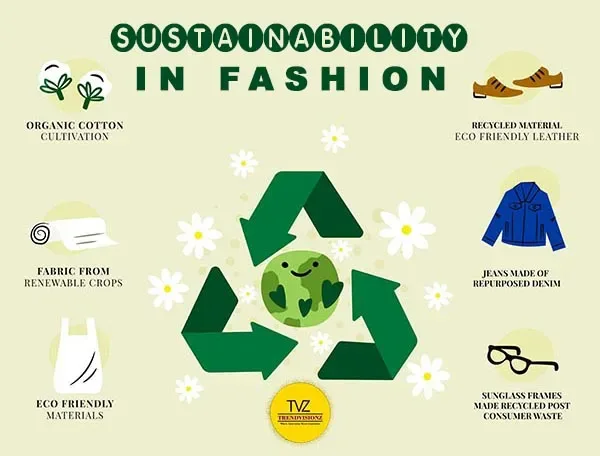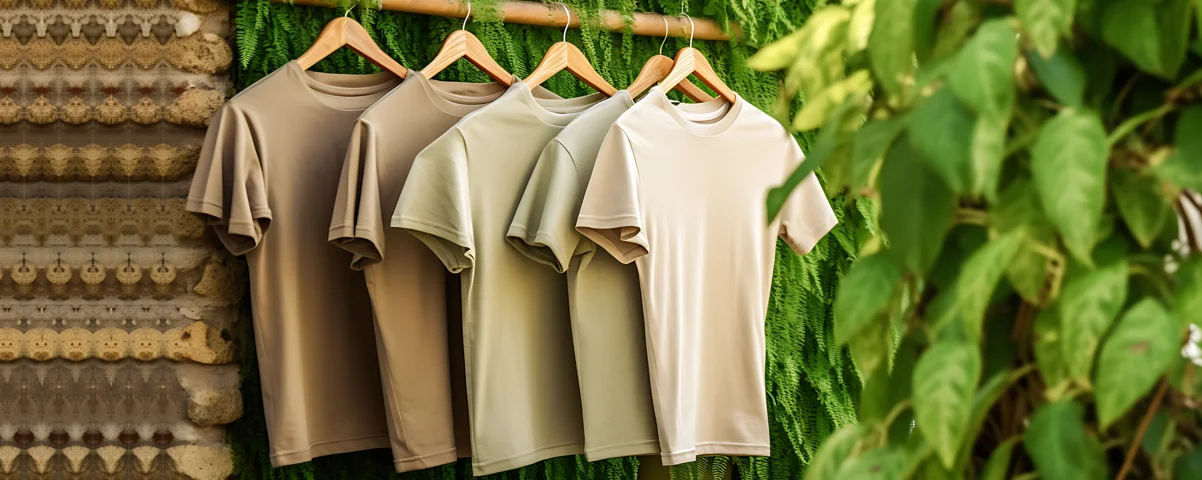Remain Ahead of the Curve by Discovering Ingenious Fashion Trends
In an industry as vibrant as style, remaining in advance involves even more than just following present fads-- it requires an expedition of technology. Smart textiles, as an example, are changing garments right into useful masterpieces, while 3D printing is revolutionizing layout processes with its adjustable, waste-reducing abilities. As sustainability becomes a keystone, advancements like green products and circular style techniques are improving environmental responsibility - Cape Town Sustainable Fashion. Moreover, the convergence of modern technology and fashion advertises a brand-new age of customer involvement. How, after that, can these emerging fads redefine the future of style, and what implications do they hold for brand names seeking to thrive in this developing landscape?

Accepting Smart Textiles
Over the last few years, the fashion business has observed a transformative change with the assimilation of smart fabrics, an innovative technology that mixes innovation with fabric. This development represents not only a fusion of aesthetics and functionality but also a considerable leap towards sustainability and customization in vogue. Smart textiles, likewise recognized as e-textiles, embed sophisticated electronic devices such as sensing units and conductive strings within the textile, allowing garments to communicate with the environment or the user.
These textiles are developed to check physical specifications, such as heart rate or body temperature level, providing real-time health and wellness analytics. Beyond health applications, wise fabrics are additionally being used for adaptive garments, which can transform shade or pattern in reaction to environmental stimuli, therefore providing a dynamic fashion experience.
Additionally, the advancement of energy-harvesting fabrics that create power from motion or sunshine is paving the way for self-dependent wearable technology. This development is appealing to eco mindful customers and designers intending to decrease the environmental impact of fashion. As study and advancement in this field advancement, clever textiles are anticipated to end up being progressively prevalent, improving the landscape of modern-day style with their multifunctional capabilities.
The Surge of 3D Printing
Transforming the manufacturing landscape, 3D printing has become a game-changer in the fashion sector. This sophisticated modern technology has made it possible for developers to press the boundaries of imagination, producing intricate and tailored garments that were previously unthinkable. By leveraging digital style and additive manufacturing, 3D printing assists in the production of intricate geometries and patterns, enabling developers to try out new textures and frameworks.
A notable advantage of 3D printing in vogue is its ability to create on-demand, lessening waste and decreasing stock demands. This efficiency not only maximizes manufacturing procedures but also allows for quick prototyping, enabling designers to bring their visions to life in a shorter timeframe. In addition, 3D printing supports personalization somewhat unparalleled by traditional methods, providing unique designs and tailored fits tailored to private customer choices.
The rise of 3D printing has actually additionally equalized style, making it easily accessible to arising developers that can currently produce top notch items without significant financial investment in standard production facilities. As innovation remains to advance, the fashion business is positioned to harness the complete potential of 3D printing, discovering brand-new materials and methods that will unquestionably redefine exactly how fashion is conceived and produced.
Sustainable Style Innovations
As the apparel industry comes to grips with journalism demand for ecological obligation, lasting fashion innovations have actually emerged at the forefront of transformative modification. The growing awareness of eco-friendly effect has actually fueled a change in the direction of more eco-conscious methods and materials. Brand names and designers are currently prioritizing sustainability, including techniques that lessen waste and decrease carbon impacts.
One substantial development is the increase of circular style, which emphasizes recycling and upcycling to prolong the lifecycle of garments. This approach not just reduces waste however additionally encourages customers to take on a more mindful strategy to clothes intake.
An additional breakthrough depends on the fostering of cutting-edge dyeing techniques that make use of waterless procedures or all-natural dyes, thus lowering the vast amounts of water and chemicals generally utilized in fabric dyeing. In addition, advancements in biotechnology have brought about from this source the creation of lab-grown leather and materials, providing cruelty-free and ecologically friendly choices to traditional products. Via these introducing efforts, the style market is making meaningful strides in the direction of a more lasting future.

Tech-Integrated Clothing
Tech-integrated clothing stands for an innovative fusion of style and innovation, improving exactly how people connect with their garments. This cutting-edge domain is noted by the addition of smart fabrics and embedded digital parts, improving both functionality and aesthetic appeal. From fitness trackers installed in sportswear to warmed coats managed via smart device applications, tech-integrated garments provides customers unmatched comfort and flexibility.
Introducing brands are driving this fad, concentrating on creating garments that react to ecological stimulations or individual commands. For example, some garments can transform shade or pattern in action to temperature level shifts, while others include biometric official source sensing units to check wellness metrics like heart rate or stress degrees. The smooth integration of modern technology into fabrics likewise reaches ecological sustainability, with initiatives to create self-cleaning materials or garments that adapt to weather conditions, therefore lessening the need for numerous layers.
In addition, the advent of wearable technology is not simply restricted to clothes but prolongs to devices like watches and eyeglasses, further broadening the scope of tech-integrated style. As the market continues to introduce, the capacity for modification and personalization in garments expands, supplying customers special, tech-enhanced fashion experiences that accommodate their individual demands and preferences.
Future of Virtual Style
Over the last few years, the future of digital fashion has actually emerged as a transformative force within the sector, leveraging improvements in electronic innovation to redefine just how fashion is developed, experienced, and consumed. By incorporating augmented truth (AR), digital truth (VIRTUAL REALITY), and 3D design devices, designers can now craft interactive and immersive experiences that transcend typical fashion borders. Virtual fashion permits for the creation of garments that exist exclusively in digital atmospheres, using unlimited opportunities for technology without the constraints of physical production.
This digital change not only offers opportunities for creative expression however likewise addresses sustainability problems inherent in conventional style techniques. Cape Town Sustainable Fashion. By eliminating the Go Here need for physical sources, virtual style minimizes waste and decreases carbon footprints. In addition, the increase of virtual fashion aligns with the enhancing customer demand for special and tailored experiences, as virtual garments can be personalized and customized to individual preferences effortlessly

Conclusion
The style sector's future lies in the integration of ingenious modern technologies and sustainable practices. Digital fashion is poised to redefine customer communications.
In recent years, the fashion industry has seen a transformative change with the assimilation of wise fabrics, a cutting-edge development that blends technology with textile.As the style sector grapples with the pushing demand for environmental duty, lasting style innovations have emerged at the center of transformative adjustment.In current years, the future of digital style has arised as a transformative pressure within the sector, leveraging innovations in electronic innovation to redefine just how style is developed, experienced, and eaten. The increase of virtual style lines up with the boosting consumer need for individualized and distinct experiences, as virtual garments can be personalized and tailored to individual choices with convenience.
The style sector's future lies in the assimilation of cutting-edge innovations and sustainable methods.